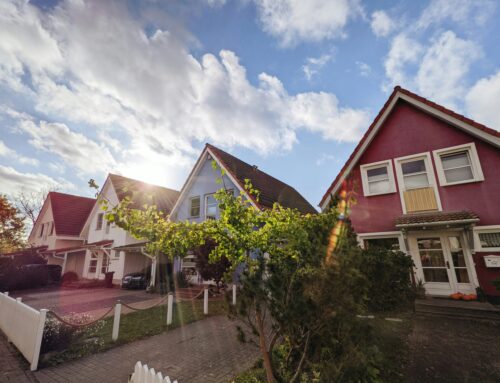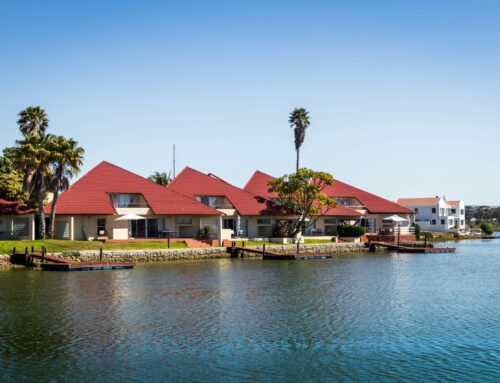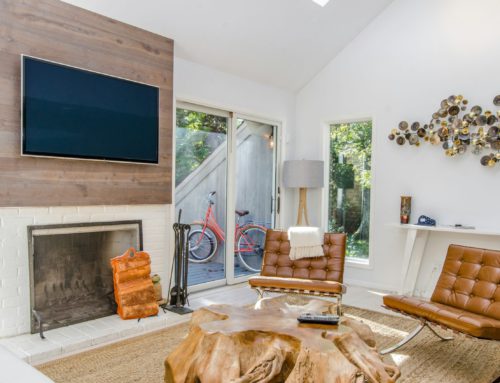Living in California means you’re no stranger to the importance of sustainability. With the state’s natural beauty and frequent droughts, making your home more eco-friendly isn’t just a trend—it’s a responsibility. Whether you’re looking to save on energy bills, reduce your water usage, or simply live a greener lifestyle, there are plenty of ways to create a sustainable home.
This guide will provide useful information and recommendations on how to make your home in California more efficient in its power and water usage and more eco-friendly. Let’s begin with some simple yet effective changes that you can apply today!
Energy Efficiency: Harnessing the Power of the Sun
California’s abundant sunshine makes it perfect for solar energy. Installing solar panels is a very practical and economical solution. They can create electricity, decrease reliance on fuel, save energy costs, and claim tax credits for their supplements.
However, there are many options to increase the efficiency of the home, apart from installing solar panels. Some simple ways to save energy include using energy-efficient appliances and LED bulbs, improving home insulation, and ensuring windows and doors have no gaps.
Water Conservation: A Precious Resource in California
Because of recent droughts in California, water conservation is no longer ideal; it is business because it is necessary. Here are some steps you can take to reduce your water use and contribute to the preservation of this precious resource:
- Fix the Irrigation System to Conserve Water. Drip irrigation allows water to be sprayed on your plants at the root area, avoiding water wastage.
- Choose Drought-Tolerant Plants: Plant local or low-water-requirement plants. They must be well suited to California’s climate.
- Collect Rainwater: Make arrangements to use rainwater for irrigation, farming, or other domestic purposes.
- Fix Leaks: Fix dripping faucets and pipes as soon as possible to reduce water use.
- Take Shorter Showers: Even a few minutes can make a big difference in the total water usage in the shower.
Sustainable Materials: Building a Greener Home
Using sustainable materials can help with home improvement projects. For example, you can use recycled materials, bamboo, or cork for your home’s floors, cabinets, or other features.
Low-VOC paints and coatings should also be used to reduce indoor air pollution. VOCs are volatile organic compounds that can harm health.
Reducing Waste: A Simpler Lifestyle
Reducing waste is critical to sustainable living. Here are some tips to help you minimize your waste:
- Recycle and Compost: Reduce landfill waste. Do not throw away food scraps; rather, recover them by recycling or composting. Dispose of them properly.
- Avoid single-use plastics. Bring refillable bottles of water, coffee cups, and shopping bags.
- Donate or Sell Unwanted Items: Don’t dump unwanted items; give them to people in need or advertise them and sell them online.
- Composting Food Scraps: Compost can fertilize your garden and help it grow. It also reduces waste.
- Reduce Food Waste: The best way to reduce the amount of food one spends and wastes is to learn how to plan meals, where to shop, and how food needs to be stored.
Repurposing and Upcycling for a Greener Home
California’s culture of creativity extends to sustainability. Repurposing and upcycling are great ways to cut waste. They also add unique touches to your home. Here are some ideas to get you started:
- Furniture Revival: Give old furniture a new lease on life by repainting dressers, reupholstering chairs, or making a coffee table from a vintage suitcase.
- Creative Containers: Don’t throw away those empty jars and cans! Use them for storage, organization, or as planters. Mason jars can hold spices or bathroom items, and tin cans can be quirky pen holders or succulent planters.
- Textile Transformation: Breathe new life into old textiles. Use fabric scraps to make decorative pillows or coasters. Old curtains can become shower curtains, tablecloths, or tote bags.
- Thrifty Chic Finds: Flea markets and thrift stores hide treasures. You might find a vintage lampshade that could be updated with a new paint job or a unique piece of furniture you could repurpose for a different use.
Greener Landscaping: Creating a Sustainable Outdoor Space
Your outdoor space can also contribute to a more sustainable lifestyle. Consider these tips for green landscaping:
- Using native plants for your landscaping is environmentally friendly since they are adapted to the area. They also help create an appreciation of your surroundings. These plants can easily grow in this climate, do not need frequent watering or care, and will add beauty to your landscape.
- Reduce your lawn size. You can turn a portion of your lawn into a succulent or xeriscape garden or start a kitchen garden. It will preserve water and allow you to cultivate your food!
- Compost Yard Waste: Compost to have natural fertilizer for your garden and reduce waste.
- Use Organic Pest Control: Always employ organic methods when defending your plants against pests. They will not pollute the environment.
- Xeriscaping: This method has resource conservatory plants, and water is used sparingly.
Small Steps, Big Impact
Greening your California home doesn’t have to be overwhelming. By making small, thoughtful changes—installing solar panels, reducing water waste, or choosing sustainable materials—you’re saving money and helping protect the environment. Each step, no matter how small, contributes to a healthier planet for future generations. So start where you can, and remember, living sustainably is a journey, not a destination. Every effort counts!







Leave A Comment